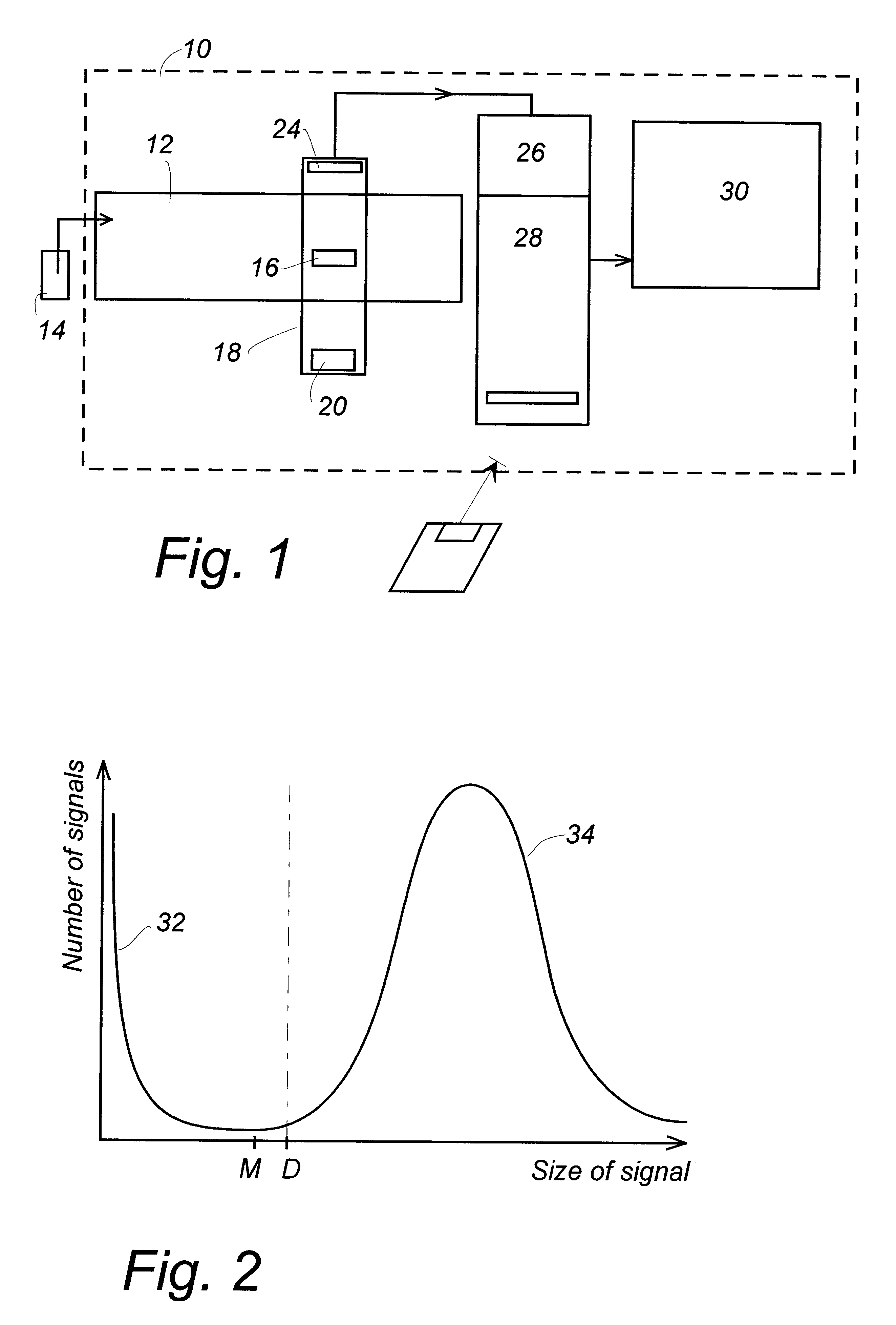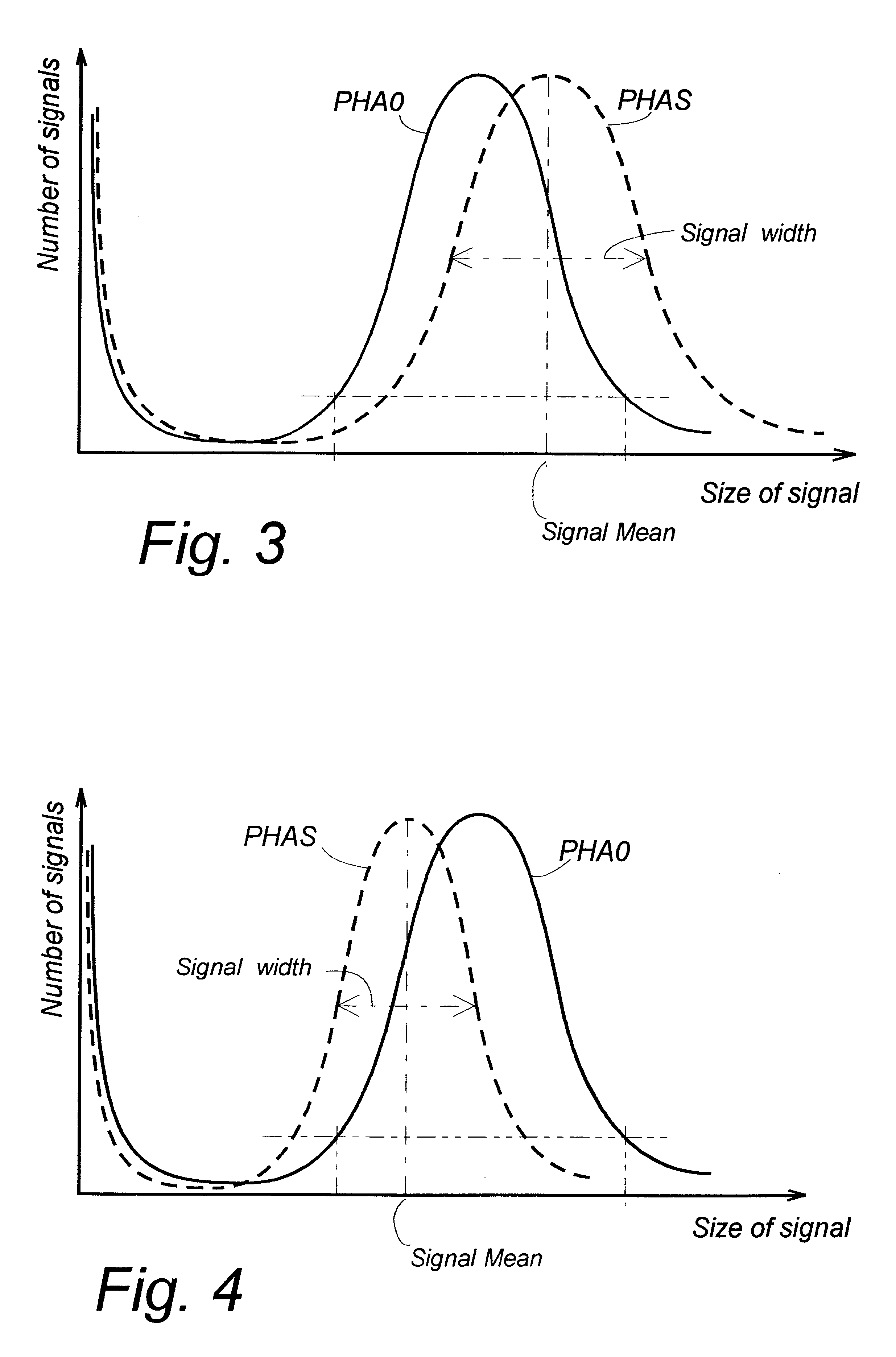Method of checking the performance of a flow cytometer instrument and apparatus for executing said method as well as a standard kit therefore
- Summary
- Abstract
- Description
- Claims
- Application Information
AI Technical Summary
Benefits of technology
Problems solved by technology
Method used
Image
Examples
embodiment
Preferred embodiment
The principles of a preferred embodiment of the present invention is shown schematically in FIG. 16. The input to the instrument is a standard fluid sample 161 and an information carrier such as a disk 162, comprising information on the lot and software.
The following actions / operations are carried out:
Every 2 hours a computer prompt tells the user to insert a standard sample 161 (from a lot delivered by the supplier)
the flow cytometer measures the standard sample a plurality of times, e.g. three times, i.e. obtains three counts, c.sub.1, c.sub.2, c.sub.3, each of which represents the number of particles passing by during a predetermined measurement period of a few seconds, e.g. 2 sec, (preferably, a period according to normal operation mode of the instrument). The count is assigned a consecutive record or registration number, e.g. No 58.1, 58,2, 58.3, 59.1 . . .
The data processing equipment including appropriate software calculates
the number of particles c.sub.1,...
example
When the user gets a message or remark, e.g. as indicated in table 1 for the records 19, 49, 51, 58 and 59, he should as soon as possible study the latest measurement results. The software is "windows.RTM."-based, providing for display of several "windows". FIG. 9 shows a list of "check measurements" or results of the same kind shown in table 3. The highlighted sample No. 58 has got a remark. Accordingly, the user has asked for a display of "Result details for 58". The result details are displayed in table form (also shown in table 2 page 15) including six rows (comprising the three measurements (rep 1, rep2, rep3), an average value, CV% (a theoretical standard deviation), and the lot average), and eight columns (comprising the values found for the count, R, Signal Mean, (58), Signal Width (8), Z (a value which quantifies the discriminating space (separation) between noise and signals), Discriminator, Noise Level, and Remarks). In a third window the lot data are displayed. Further, ...
PUM
 Login to View More
Login to View More Abstract
Description
Claims
Application Information
 Login to View More
Login to View More - R&D
- Intellectual Property
- Life Sciences
- Materials
- Tech Scout
- Unparalleled Data Quality
- Higher Quality Content
- 60% Fewer Hallucinations
Browse by: Latest US Patents, China's latest patents, Technical Efficacy Thesaurus, Application Domain, Technology Topic, Popular Technical Reports.
© 2025 PatSnap. All rights reserved.Legal|Privacy policy|Modern Slavery Act Transparency Statement|Sitemap|About US| Contact US: help@patsnap.com



